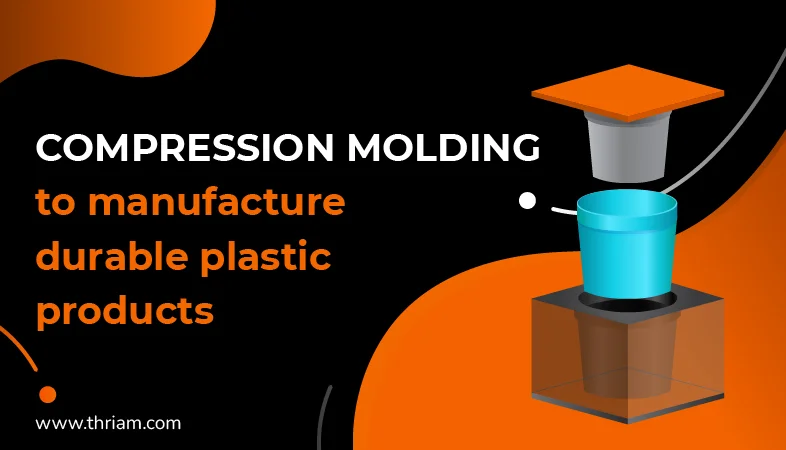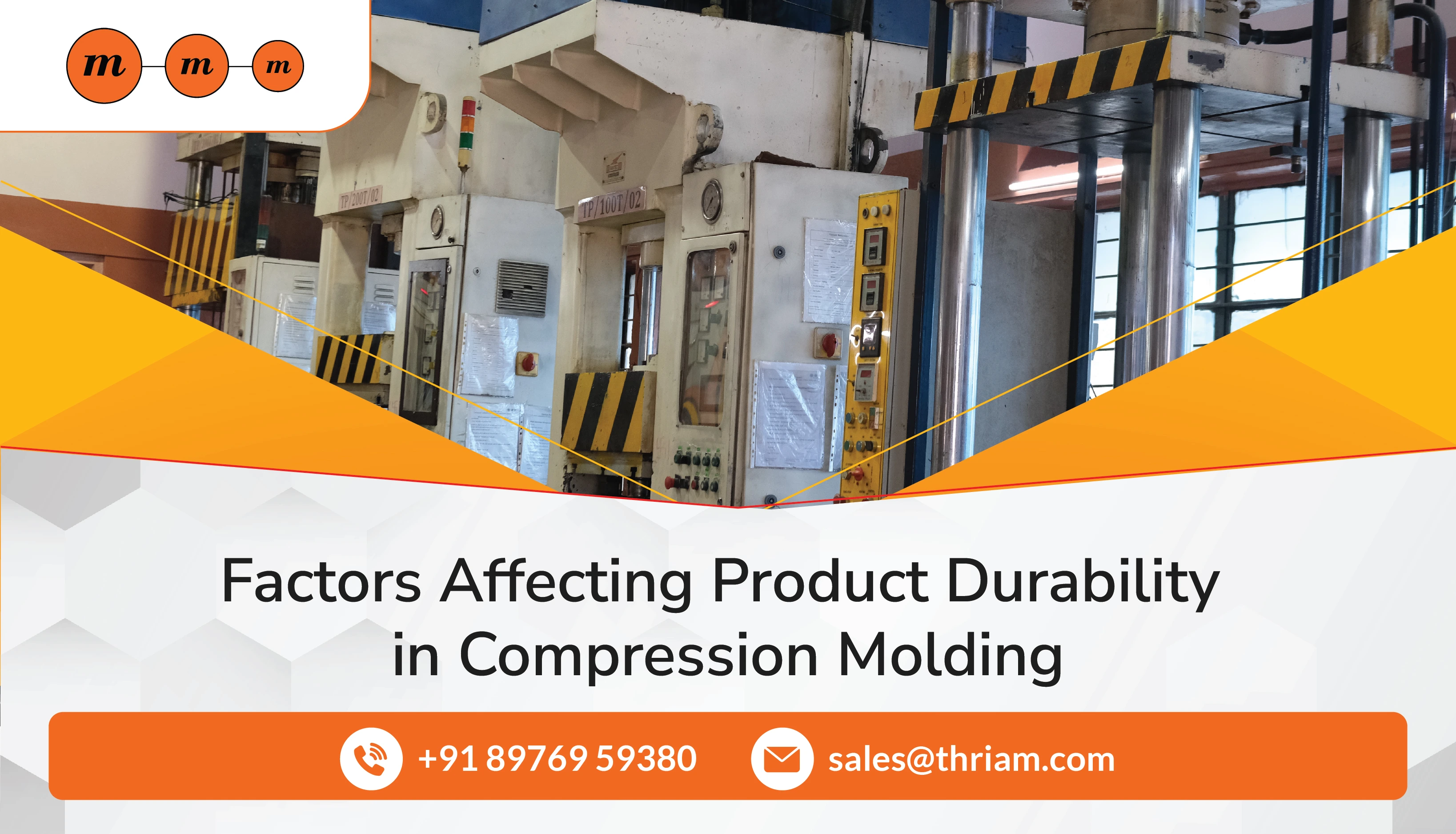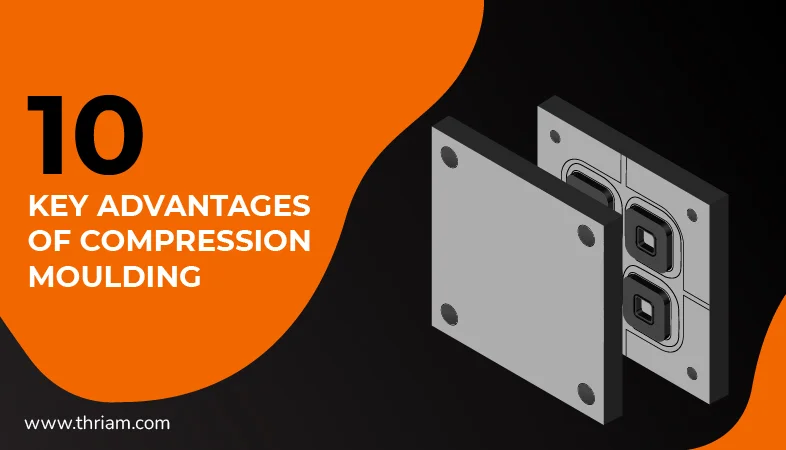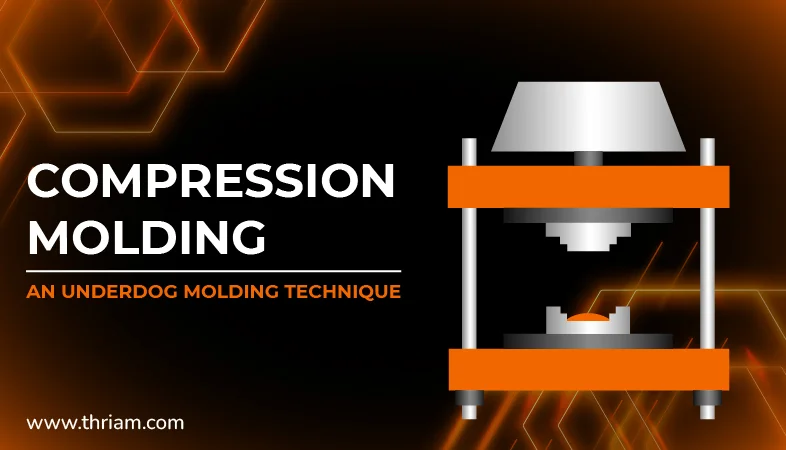Engineering Resilience: The Role of Compression Molding in Product Durability

Introduction
In the manufacturing industry, compression molding is a widely used technique that plays a crucial role in creating durable products. Product durability is a key consideration for consumers, as they expect their purchases to withstand the test of time.
In this blog, we will delve into the impact of compression molding on product durability, exploring how this manufacturing process contributes to the long-term durability of various products.
Understanding Compression Molding
Compression molding is a popular manufacturing process for creating a variety of products. It involves applying heat and pressure to a material within a mold to shape it into the desired form. This type of molding is commonly used for thermosetting materials that harden and maintain their shape after curing.
The compression molding process begins with the selection of the desired material, which should have good mechanical properties, chemical resistance, and thermal stability. The material is then placed into a preheated mold and subjected to high pressure and temperature, causing it to conform to the shape of the mold. The pressure exerted must be sufficient to ensure that the material spreads uniformly throughout the mold cavity, eliminating any air pockets or bubbles that could weaken the part.
The mold used in compression molding can be made of various materials, including metals, ceramics, or composites. The design of the mold must accommodate the material's flow properties and allow for the uniform distribution of pressure and heat. To ensure high-quality parts, molds are often designed and fabricated specifically for each product.
One of the primary advantages of compression molding is its versatility in producing complex shapes. The molding process is optimized for high-volume production runs and can produce large parts with consistent quality. Additionally, compression molding is a cost-effective manufacturing method because it requires less material waste than other molding processes, resulting in less material cost.
Compression molding has numerous applications across industries, including automotive, aerospace, and electrical. Products that are commonly created using this process include automotive parts, electrical insulators, and appliance housings.
Factors Affecting Product Durability in Compression Molding

When it comes to manufacturing products, compression molding is a widely used technique known for its ability to create durable and long-lasting goods. However, several factors influence the durability of products produced through compression molding. Understanding and optimizing these factors can greatly enhance the longevity and quality of the final product.
The first critical factor is the selection of materials. Compression molding is commonly used with thermosetting materials, such as composites or plastics. The choice of material can significantly impact the durability of the product. Manufacturers must consider mechanical properties, chemical resistance, and thermal stability when selecting the material for compression molding. Using materials with high strength and resistance to degradation can ensure the product's durability even under challenging conditions.
Another key factor is mold design. The mold used in compression molding determines the shape and structure of the final product. Proper mold design is crucial for distributing pressure evenly throughout the material during the compression process. This ensures that the material fills the mold cavity uniformly, minimizing the risk of weak spots or structural deficiencies in the finished product. Creating a well-designed mold that supports proper material flow and cooling can significantly enhance product durability.
The compression molding process parameters also play a vital role in product durability. These parameters include temperature, pressure, and curing time. The selection and control of these parameters are crucial to achieving a durable product. The combination of optimal temperature and pressure ensures proper material flow and thorough curing, resulting in a product with improved strength and resistance to wear.
Post-molding treatments and finishing techniques are additional factors that affect product durability. Post-molding treatments like cooling, annealing, or stress relieving can further enhance the strength and durability of the product. Additionally, appropriate finishing methods such as polishing, coating, or surface treatment can provide extra protection against external factors like corrosion or abrasion, contributing to the overall durability of the product.
Lastly, product handling and maintenance are essential to ensure long-lasting durability. Proper storage, transportation, and usage, as well as adherence to recommended maintenance practices, can significantly extend the life of a compression-molded product. Manufacturers should provide guidelines and instructions to users on how to handle and care for the product properly.
The Role of Compression Molding in Product Durability
When it comes to manufacturing durable products, compression molding plays a crucial role. As a highly versatile and efficient process, compression molding helps ensure the durability and longevity of a wide range of products. Let's take a closer look at the role compression molding plays in enhancing product durability.
Compression molding involves the application of heat and pressure to a material within a mold, resulting in the desired shape and structure. This process is primarily employed for thermosetting materials, which harden and maintain their shape after curing. The unique characteristics of compression molding contribute to the durability of the final product.
One of the key advantages of compression molding is its ability to produce complex shapes with uniform material distribution. When pressure is applied during compression, the material flows evenly throughout the mold, minimizing the presence of air pockets or voids. This uniform distribution of material ensures that the product maintains its structural integrity, reducing the risk of weak points or areas prone to premature failure.
The compression molding process also allows for the incorporation of reinforcing elements, such as fibers or fillers, to enhance the product's strength and durability. These reinforcements improve the material's resistance to stress, impact, and other external forces, making the final product more robust and less susceptible to damage.
Additionally, compression molding enables manufacturers to use high-quality and durable materials that can withstand harsh conditions. The process can handle materials with excellent mechanical properties, chemical resistance, and thermal stability, ensuring that the resulting product is built to last. Whether it's automotive parts, electrical components, or appliance housings, compression molding helps create products that can withstand the test of time.
Furthermore, compression molding offers cost-effective manufacturing solutions that contribute to product durability. The process generates less material waste compared to other molding techniques, reducing the overall production costs. This cost efficiency allows manufacturers to invest in high-quality materials and precise mold designs, enhancing the durability of the final product without compromising affordability.
Advancements in Compression Molding for Increased Durability
In recent years, advancements in compression molding techniques and technologies have further improved product durability. Innovative approaches, such as the use of advanced reinforcement materials, have resulted in products with enhanced strength and impact resistance. The incorporation of nanomaterials and additives has allowed for increased durability in demanding applications.
Case studies showcasing these advancements highlight the positive outcomes achieved through innovative compression molding techniques. From industries such as aerospace to consumer goods, manufacturers are exploring ways to further enhance product durability using advanced compression molding methods.
Challenges and Limitations of Compression Molding in Product Durability
While compression molding is highly effective in creating durable products, it is not without its challenges and limitations. One of the main challenges is the need for tooling and mold design expertise. Designing and constructing molds that can withstand high pressure and temperature requires a thorough understanding of the process. Additionally, the initial costs associated with tooling can be significant.
Another limitation of compression molding is the longer cycle times compared to other molding techniques. This can limit the production volume and lead to higher costs. However, manufacturers are constantly working to optimize cycle times without compromising product durability.
Future Outlook
The future of compression molding and its impact on product durability is optimistic. Advancements in materials, tooling, and process optimization will continue to drive improvements in durability. Manufacturers will focus on developing more durable and sustainable products, meeting the increasing demands of consumers.
Conclusion
Compression molding is a vital manufacturing technique that contributes significantly to the long-term durability of products. Through careful material selection, optimized tooling, and precise control of compression molding parameters, manufacturers are able to create products that exhibit exceptional durability and withstand the test of time. As advancements in compression molding continue, we can expect even more durable products to be developed, providing consumers with greater satisfaction and value for their investments.



